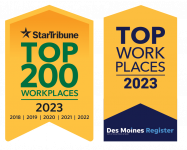
Can Planners and Engineers Do More Than Coexist?
Planners and engineers often see the world through different lenses. While planners typically look for the “when” and “who,” engineers seek the “how” and “what,” which can lead to conflicts. They may feel like the other is speaking a different language. However, more and more we are seeing planners and engineers working side by side. Finding balance and understanding when it feels like you’re from two different worlds can be both challenging and rewarding.
Planning is more naturally a creative pursuit with the ability to encourage unique solutions. Engineering tends to be more textbook, using quantitative engineering practices. But, we have the same goal – to deliver high-quality, effective projects for our communities. Over the past two decades, the two professions have been pushed to not just get along, but to collaborate. This trend is most evident in transportation. Since the adoption of the Intermodal Surface Transportation Efficiency Act (ISTEA) and subsequent transportation bills, engineers have been required to consider traditional planning elements, like land use and density and multimodal options, when designing transportation systems. Planners, at the same time, must now give more thought to engineering-focused items, such as road design and function.
So what does this mean as planners and engineers go about their daily work?
First, it requires us to learn, or at least try to understand each other’s language. Often, planners find themselves at the front of public meetings without the presence of an engineer. This means planners must learn engineering terminology in order to be able to present and explain information to the public. It also means planners no longer have the luxury of drawing a concept plan on an aerial photo and sending it off to the engineers to make it work. Planners have to be aware of multiple engineering factors; if not the “how,” at least the “what.”
On the flip side, engineers are taking a page from the planners’ playbook and incorporating more public engagement opportunities into engineering projects. These projects are important and often quite expensive, so public involvement has become a critical component in order to gather ideas and gain support. The days when the location of infrastructure was determined by the easiest engineering solution are gone. Engineers need to be just as aware of the “who” as they are of the “how” in the project.
It also means planners and engineers need to communicate, early and often. As engineers begin designing complex infrastructure projects, planners should be included in the process from the beginning. They can help design public engagement, identify long-range land use plans, and incorporate the necessary planning approvals into the process. And engineers should be included in planning projects, from small area plans to overall comprehensive plans. They can provide technical expertise on infrastructure capacity and environmental issues and solutions to ensure plans are realistic and implementable.
A lot of good happens when planners and engineers combine forces. Engineers gain a broader sense of the context of the specific improvement and understand how the project can be shaped to fit the community’s vision and goals. For instance, a road project is often more than just about the road; the look and feel of it can create a sense of place, spur redevelopment and economic growth, provide multi-modal transportation options, and achieve other community goals. If we only focused on the number of lanes, intersection control, and pavement type, we would miss the opportunity to achieve these things. Planners bring the community’s goals to the forefront to complement and shape the road design.
On the other hand, by bringing engineers into plan development early on, planners are able to produce plans and studies that are easily implemented. Engineers can speak to the physical and financial aspects of the plan. The result is not just a great idea that may sit on a shelf, but something that is feasible to build.
Working together, whether we want to or are forced to, introduces multiple opportunities to learn from each other. We can begin by informally talking over issues and sharing our insights. We can invite one another to our respective professional trainings and conferences. And we can start listening.
Planners and engineers ultimately want the same thing: to build the best communities we can. Working together, we can do just that.
By Jane Kansier, Senior Urban Planner
Published in Minnesota Cities Magazine. Click here to read more.
